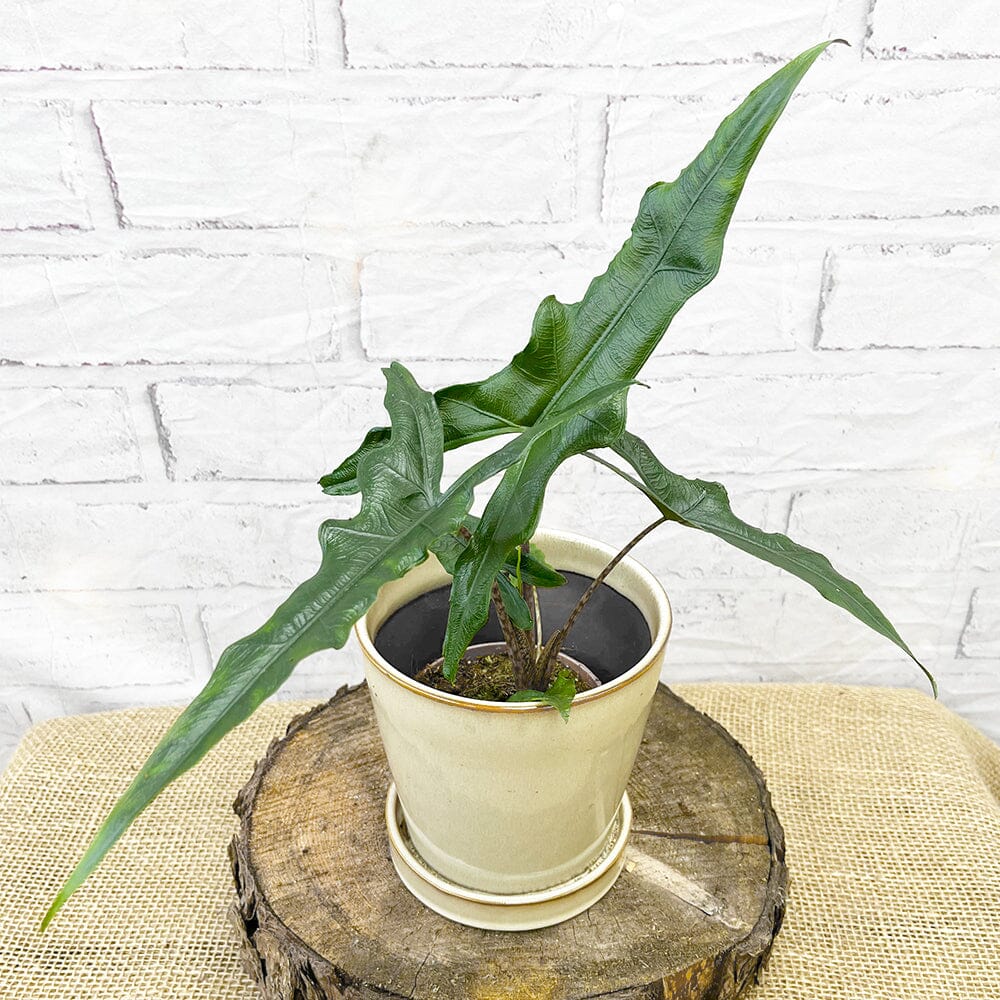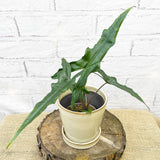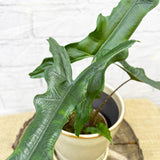Sold Out
15 - 25cm Alocasia Sulawesi Sabrina Narrow House Plant 9cm Pot
Alocasia, commonly known as Elephant Ear plants due to their large, impressive leaves, are stunning tropical plants that can make a bold statement in any indoor or outdoor garden. Originating from the tropical regions of Asia and Eastern Australia, these plants are known for their dramatic foliage, which is typically large, dark green, and arrow or heart-shaped. Here's a general description and care guide for Alocasia:
Description:
-
Leaves: They exhibit large, typically arrow-shaped leaves, often with unique veining or coloration.
-
Flowers: Alocasias can produce a spadix-type flower, similar to other members of the Araceae family, but it's their foliage that's usually the main attraction.
-
Size: Depending on the specific species or cultivar, Alocasias can vary widely in size, from compact varieties suitable for table tops to large species that can reach several feet in height.
-
Toxicity: All parts of the Alocasia plant are toxic if ingested, and the sap can irritate the skin. Extra caution should be taken if you have pets or small children.
Care Guide:
-
Light:
- Prefers bright, indirect light. Direct sunlight can burn the leaves.
- Some varieties can tolerate lower light conditions but may grow more slowly and produce smaller leaves.
-
Water:
- Keep the soil consistently moist, but avoid waterlogging to prevent root rot.
- Allow the top 1-2 inches of soil to dry out slightly between waterings.
-
Humidity:
- Alocasia thrives in high humidity, ideally above 60%.
- Employ a humidifier or place the plant on a tray filled with water and pebbles to increase surrounding humidity.
-
Temperature:
- Prefers temperatures between 65°F and 75°F (18°C - 24°C).
- Keep away from drafts and sudden temperature fluctuations.
-
Soil:
- Opt for a well-draining potting mix, such as a mixture of potting soil, perlite, and orchid bark.
- Ensure the pot has sufficient drainage holes.
-
Fertilization:
- Fertilize every 4-6 weeks during the growing season (spring and summer) using a balanced liquid fertilizer.
- Reduce fertilization during the dormant winter months.
-
Pruning:
- Trim away yellowing or damaged leaves to maintain the plant’s appearance and health.
- Use clean, sharp scissors or pruning shears to avoid infection.
-
Repotting:
- Repot every 2-3 years or when the plant becomes root-bound.
- Spring or early summer is the best time for repotting.
-
Pest and Disease Management:
- Watch for common pests like spider mites, aphids, and mealybugs. Use insecticidal soap or neem oil as a preventative measure.
- Be wary of fungal and bacterial diseases, which can occur in overly damp conditions.
-
Propagation:
- Alocasia can be propagated by dividing the bulbs or rhizomes.
- Separate the bulbs during repotting and plant them in their own containers.
Each Alocasia cultivar might have slightly different requirements, so be sure to observe your plant and adjust care practices as needed. It's also worth seeking out any specific guidance for the exact cultivar of Alocasia you are cultivating.
Check out our YouTube video to see exactly how we pack for safe delivery.
- Plants are supplied in plastic nursery pots unless stated in the product title.
- Plants are not for consumption unless stated as edible.
- Plant heights can fluctuate +/- 10%.
- Our plants are kept at our tropical nursery in Yorkshire where we maintain an average temperature of 18c.










































